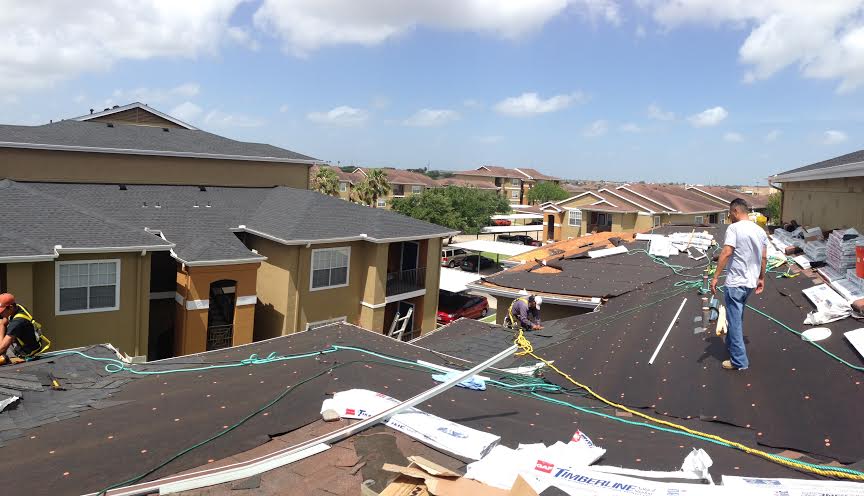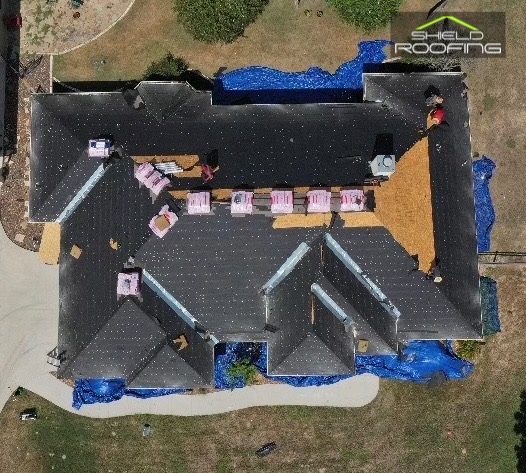Replacing a roof is an important task for homeowners in Texas, as it can provide protection from the elements and increase energy efficiency. Obtaining a permit to replace one’s roof is necessary to ensure safety regulations are met and that the work is carried out correctly. This article will discuss how to get a permit to have your roof replaced in the state of Texas.
The process of obtaining a permit involves various steps, including understanding local building codes, submitting required paperwork, and paying associated fees. It is important to follow all instructions carefully and make sure they are completed accurately and on time; failure to do so could result in costly delays or fines. Furthermore, certain types of roofs may require additional permits or inspections before work can begin.
In conclusion, this article provides an overview of what needs to be done in order to obtain a permit for replacing one’s roof in Texas. Understanding these requirements beforehand helps streamline the process and ensures that the project progresses smoothly with minimal complications.
Roof Replacement Requirements
In Texas, it is necessary to obtain a permit before beginning the process of replacing your roof. This requirement applies to both residential and commercial properties. The application process for obtaining a roof replacement permit varies depending on which city or county you are in. Generally speaking, applicants must submit plans that demonstrate compliance with building codes, provide proof of ownership or authorization from the owner, and pay any required fees. Additionally, some jurisdictions require an inspection once the work has been completed.
The purpose of this permitting process is to ensure public safety by ensuring that all roofs meet certain minimum standards for quality materials, installation methodologies, and structural integrity. It also serves as a way for local governments to monitor growth and development within their jurisdiction and keep records of construction projects that involve major modifications such as roof replacements.
Building Permits In Texas
In Texas, the process of obtaining a building permit to replace one’s roof requires specific steps and documentation. The first step is to contact the local building official in the county or municipality where the replacement will take place. This individual can provide information regarding any additional requirements that may be needed for approval. Next, an application must be completed and submitted along with documents such as drawings or sketches of the project that contain precise measurements, materials being used, and other relevant details. In addition, it is necessary to include proof of ownership, liability insurance coverage for workers performing the job, and payment for all applicable fees. Once all required items have been received by the appropriate authority, review and inspection processes begin before final approval is granted. Any discrepancies found during this stage must be corrected prior to receiving permission to move forward with construction activities. With compliance of all laws and regulations in place, homeowners should receive their permits shortly thereafter.
Application Process For A Roof Replacement Permit
In order to obtain a permit for a roof replacement in the state of Texas, applicants must first contact their local building official. The municipality or county where they live will provide specific regulations and applications that are necessary to complete the process correctly. After filling out all of the paperwork, it is important to review them before submission as any errors could delay approval.
The next step is to submit all required documents along with payment for any applicable fees. Applicants should anticipate an inspection from a qualified inspector who determines whether the proposed construction meets established codes and standards. Once approved, permits can be issued which authorize contractors to begin work on replacing the roof according to the specifications provided by the applicant.
Cost Of Obtaining A Permit
In Texas, the cost of obtaining a permit to have one’s roof replaced varies depending on the city or county that is being serviced. Generally speaking, permits must be applied for and issued prior to any construction projects taking place. Permit fees are typically based upon the amount of square footage that needs to be replaced as well as the total estimated value of all materials used in the project. For example, some cities may charge $0.10 per square foot of area needing to be replaced while others might require an additional fee added onto this fee if certain building codes are not met. Furthermore, there may also be application fees associated with obtaining a permit from local governments which can range anywhere from $50-100 USD depending on locality and complexity of work needed for completion.
All in all, it is important for anyone looking into having their roof replaced in Texas to research their particular municipal regulations regarding permitting and acquire estimates from multiple contractors before beginning any construction process. This will ensure that they know what costs may need to be incurred in order to obtain a valid permit and avoid any unexpected financial surprises down the road.
Time Frame For Receiving A Permit
Once the permit application is submitted and accepted, homeowners in Texas can expect to receive their roof replacement permits within a certain time period. Depending on the local jurisdiction of issuing authorities, this process may take anywhere from two days up to 10 business days or more. In most cases, permits are issued within three to seven business days. It’s important to note that while wait times are typically shorter for smaller projects such as shingle replacements, some jurisdictions require inspections at various stages of construction which could add additional delay. If a contractor begins work without verifying that all necessary paperwork has been completed and approved by the appropriate authority, penalties could be applied. Homeowners should always verify with their contractor that all documents have been obtained prior to beginning any project.
Professional Assistance For Obtaining Your Permit
In order to get a permit to have your roof replaced in Texas, there are professional services available that can help. Professional contractors and building inspectors can provide assistance throughout the permitting process by evaluating existing structures and providing input on code compliance issues. Additionally, they can also assist with submitting documents for approval as well as helping coordinate inspection visits from local authorities when necessary.
The cost for these services may vary depending on the complexity of the project but is typically small compared to the total costs associated with replacing a roof. In addition, having an experienced professional involved in the process often results in fewer costly delays or problems arising during construction due to unforeseen legal requirements or other issues. For this reason hiring a qualified contractor or inspector may be worth considering when attempting to obtain a permit for roof replacement in Texas.
Local Regulations For Roof Replacements
In Texas, various local regulations must be followed when replacing a roof. Roofing projects require permits from the city or county in which the property is located. This permit should include details about the materials and methods used for the replacement. Additionally, some jurisdictions may also require an inspection of the job site before issuance of a permit. The building codes applicable to the area will need to be taken into account as well; this includes any requirements related to fire safety, structural integrity, ventilation, and insulation standards.
Once a complete application has been submitted with all necessary documents included, it can take up to three weeks for approval by local authorities. Once approved, homeowners are expected to adhere strictly to these regulations during construction and keep records of all processes involved in getting the project completed successfully. Failure to do so could result in fines or other legal ramifications.



